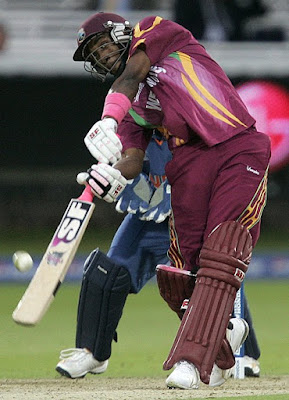

Bravo continued from where he left off against the Lankans in the qualifying group match. After scalping 4 wickets in India's paltry innings of 153, Bravo took on the mantle from Gayle to carry West Indies to a superb victory over India with 8 balls to spare. Bravo's innings of 66 n.o was a mix of aggression & caution with the balance between the two changing seamlessly over the game's progress. His winning stroke was a sweetly timed sixer over long off that the bowler Zaheer could only watch in despair.
Bravo, indeed!
But what I think changed the game in favour of West Indies was the 'knocking-off' of Indian top order of Rohit Sharma, Gambhir & Suresh Raina. All the three big hitters were back in the pavilion when India's total was just 29. The defining moment of this shift of balance was when Simmons took a marvellous catch running back for 20 odd yards to send Gambhir back. Immediately an image of Kapil running behind to catch out Viv Richards in 1983 WC final, at the same ground, flashes in the now overloaded mind.
What a catch! Surely that won the match. This one and the one caught 26 years back.
What do India do from here on ? One is they can hope that even in the absence of Sehwag, the top three batsmen will find form to put up a challenging score , which the mighty South Africans or the unpredictable English side will find difficult to defend.
Or they can take a do/die attitude and get Irfan Pathan to open with Gambhir with Rohit coming in one down position followed by Yusuf Pathan, Raina & then Dhoni. It was surprising to see Irfan Pathan not get his full quota of 4 overs from Dhoni ; while Ishant's & Zaheer's over pitched lollies were getting pounded.
In the end, the team that deserved, won the match. There's only one word that one can repeat in such a situation.
Bravo.